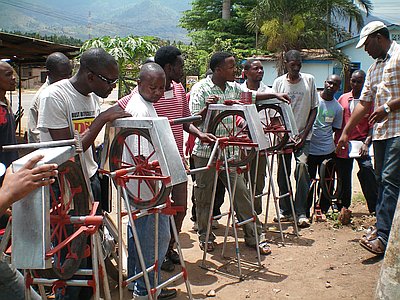Business Development Toolkit

The Business Development Toolkit explains the principles of doing business in poverty-stricken areas, offers a step-by-step business development approach and provides practical tools, tips and background information. The Toolkit is based on the experience of entrepreneurs in the water and sanitation sector in India, but is equally applicable to markets in other countries.
Water and sanitation problems are concentrated in areas where people live in extreme poverty, on less than $1 a day. At a recent UN meeting in New York, HRH Prince Willem Alexander called water and sanitation the ‘missing pieces’ in the puzzle of poverty reduction. Many smart solutions are invented, but how can the consumer be reached in these extremely poor areas?
Four Dutch entrepreneurs took up the challenge and launched their products on the Indian market. Their successes and failures provided the input for an Appropriate Technology Business Development Toolkit for the water and sanitation sector, compiled by Aidenvironment and BiDconsult and sponsored by Partners for Water.
The complete Toolkit or individual sections can be downloaded below. These documents contain links to the accompanying tools and attachments.
Field experiences
| Akvo RSR Project: Water training centre in Malawi
This project focuses on training local businesses that will produce and sell new low cost water solutions that are affordable for (groups of) households. Demand and investments will be stimulated through social marketing and with the help of the Watsan Centre of Excellence. The goal is to establish a sustainable and competitive supply sector that offers a wide range of low cost water options (pumps, filters, etc) that can deliver water for middle and low income families. |
References
- Business Development Toolkit
- Sourced from the Micro Water Facility website.
